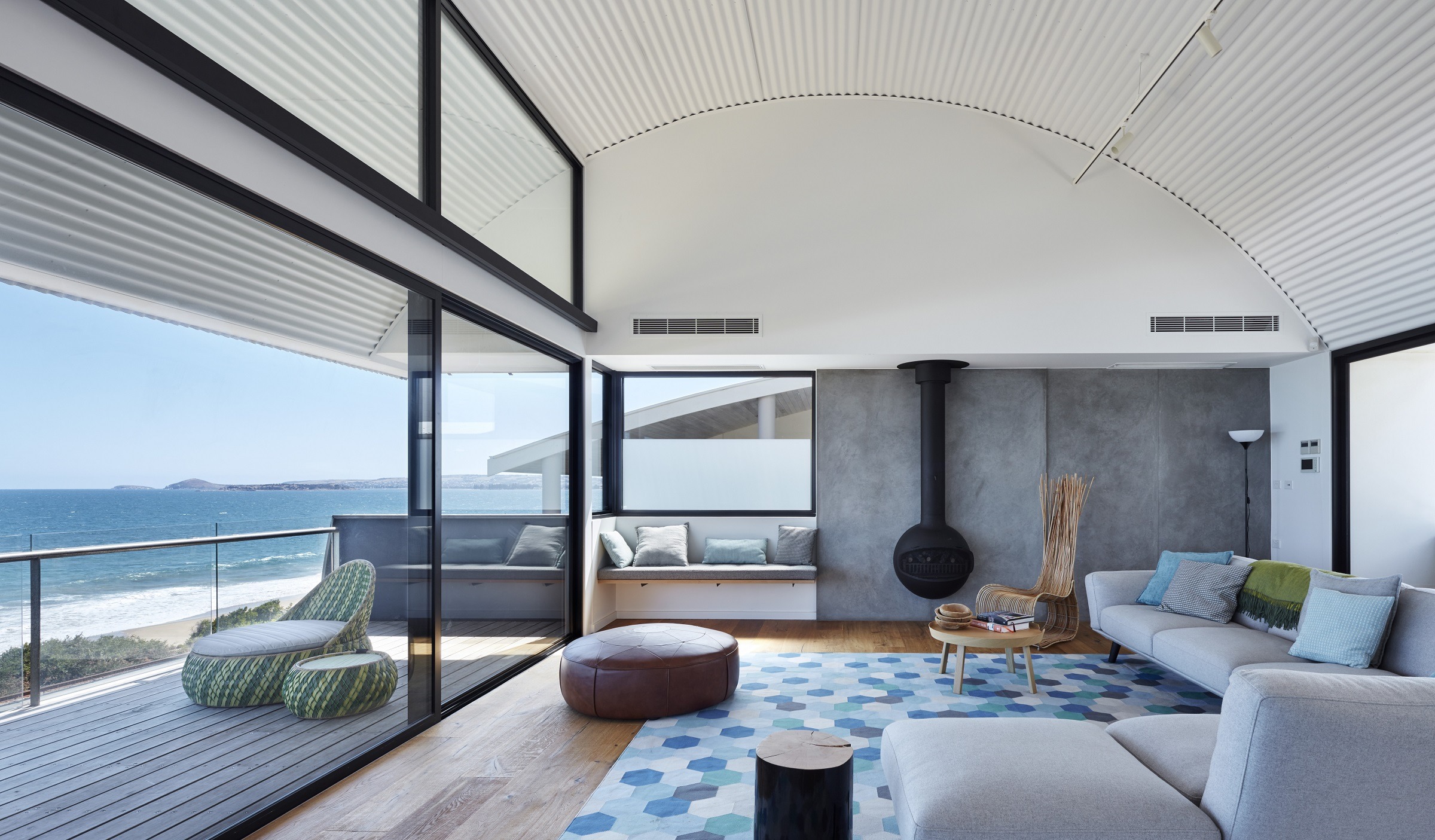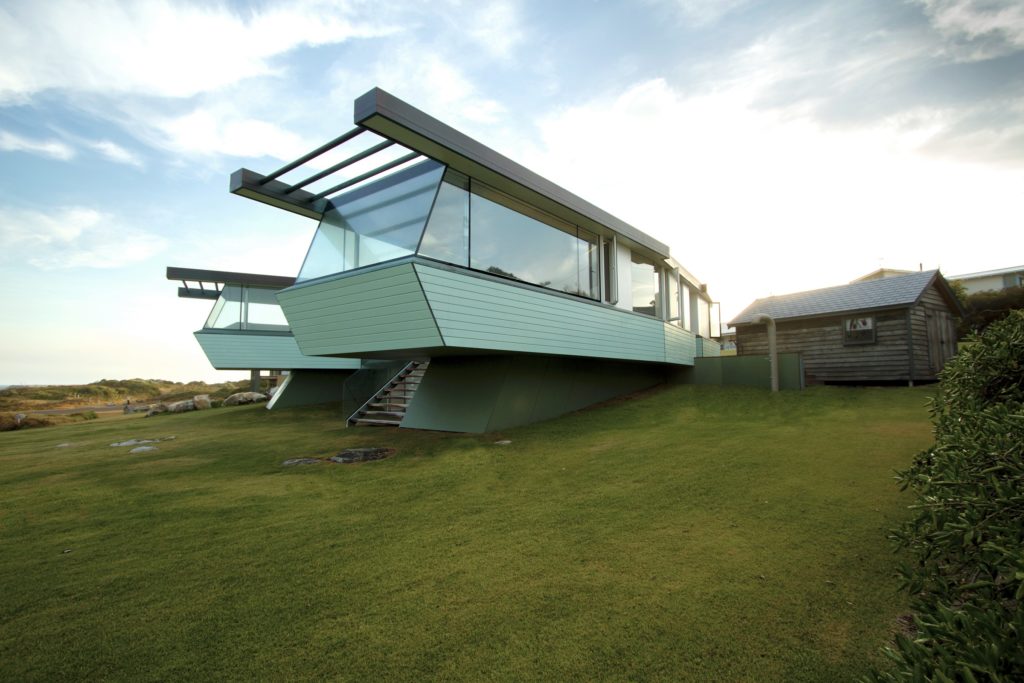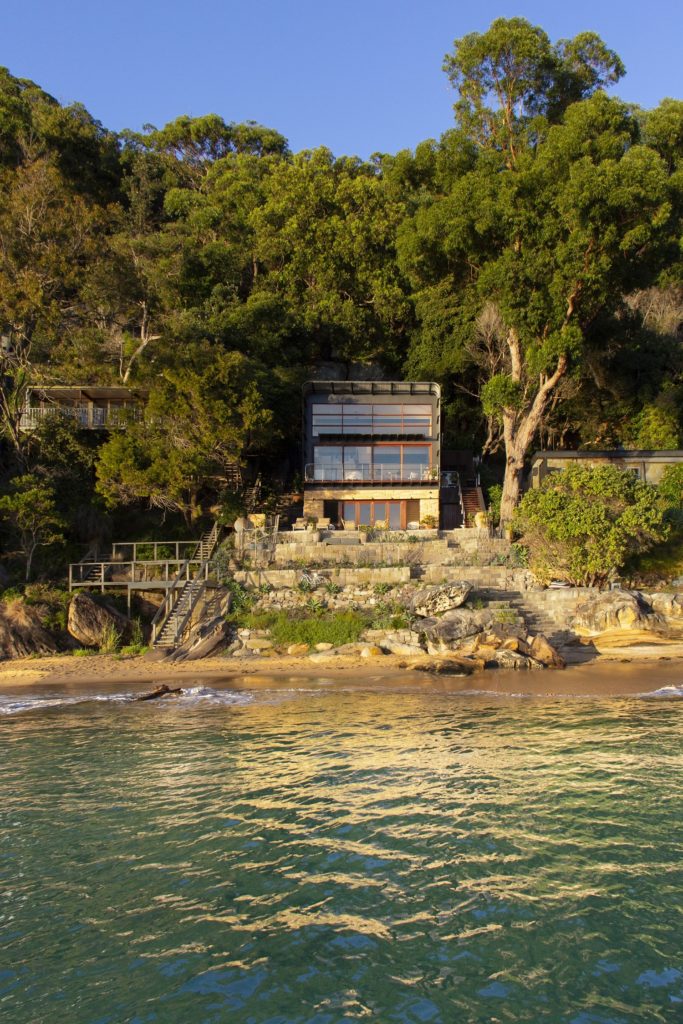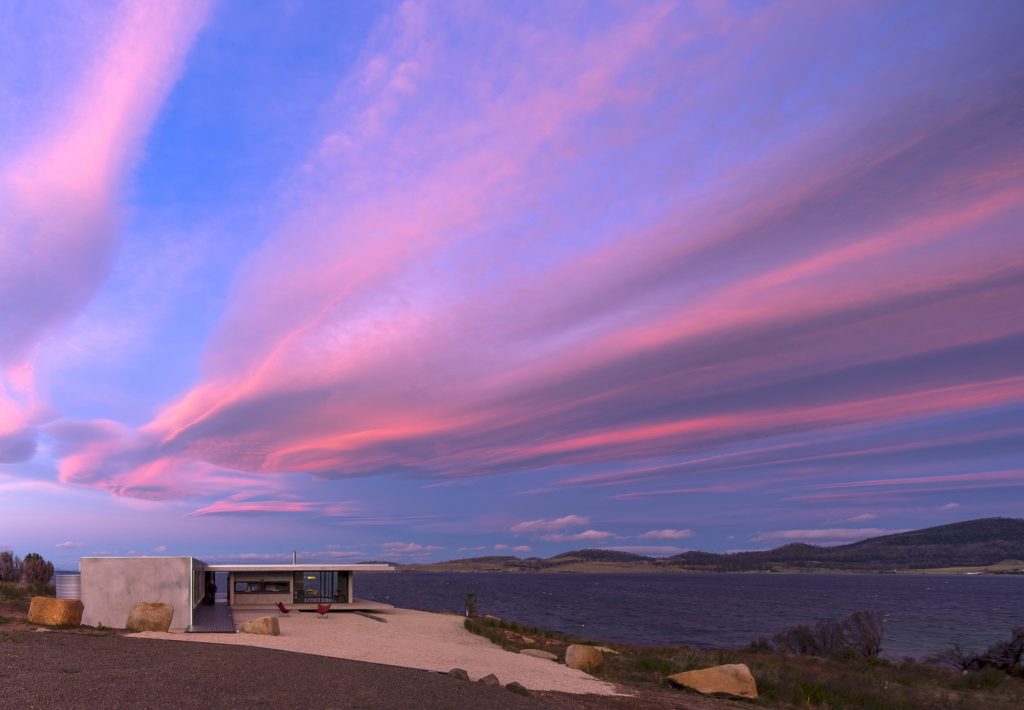Shop
Beach Houses by the Book
Toby Preston dips into Australian Beach Houses, a new book which celebrates contemporary,
upgraded architectural takes on the iconic Aussie beach getaway.

Pacific Island Living
February 6, 2020From ultra contemporary down to nostalgic echoes of the traditional beach shack – that’s how Australian Beach Houses, by Barry Stone, summarises this collection of 25 of the country’s most striking homes.
Australia’s love affair with the beach began early and was accelerated by the 1903 declaration by Sydney’s Manly council finally legalising daytime swimming on the famous beach. It wasn’t until after World War I that the shift from bush culture to a coastal culture took off and with a fibro building boom. Fibro was the cladding of choice (inside and out) because it was cheap, portable and resisted coastal corrosion. It was also eventually found to be lethal. But by that stage Australia was the world’s highest per capita user of this material.
So it’s no surprise that you won’t find any houses featured in this book made of asbestos. There’s still timber and corrugated iron in a nod to the original beach shacks but many of the structures are made from much more durable materials like masonry and brick but they all share an ambition to be at home near the water and take advantage of the location, the views and access to the beach. The book is arranged into chapters dedicated to a single house and architect with detailed plans, lavish photography and the back story to the building.
For anyone interested in architecture and specifically casual, open waterfront designs then this book is a delight to browse and inspire. The beach is there for everyone, the lucky ones get to live in close proximity, others can dream – or rent.

The nautical Augusta Beach House, Flinders Bay Western Australia by architect Andrew T Boyne. It won’t surprise that the owners are boat builders and pre-fabricated the house in modules in their boat building workshops and trucked them to the site.

Hart House, Great Mackerel Beach, New South Wales, architect Casey Brown Architecture, photography Rhys Holland. This place overlooks the idyllic waters of Pittwater to the north of Sydney and sits on a steep slope above Great Mackerel Beach. The main interior of the house features soaring double height ceilings in the main living spaces which also contains a ‘utility pod’ which has a bathroom and pantry.

The dramatically photographed Dunalley House, shot by Brett Boardman and designed by STA Architects sits on the Tasman Peninsula in Tasmania.
This stunning structure replaces a previous holiday retreat which was destroyed in bushfires of the summer of 2012/13. It is rightly described, because of its low profile and design as having a Prairie-style Frank Lloyd Wright look. Below left and middle: Boomer Beach House, Port Elliot, South Australia – architects: Max Pritchard Gunner (MPG) Architects, photographer Sam Noonan. Boomer house owes its distinctive look to the hundred year-old vernacular masterpiece, the Nissen Hut, it also follows that great Australian tradition of using corrugated metal. Below, far right: Phillip Island House, Phillip Island, Victoria. Architects, Modscape, photographer, John Madden. Sitting on a windswept hill overlooking Bass Strait this modular home’s design does nothing to belie its pre-fabricated origins which see seven individual modules assembled as two rectangular
volumes spanning 131 feet in just 12 weeks.
© 2024 Pacific Island Living Magazine all Rights Reserved
Website by Power Marketing